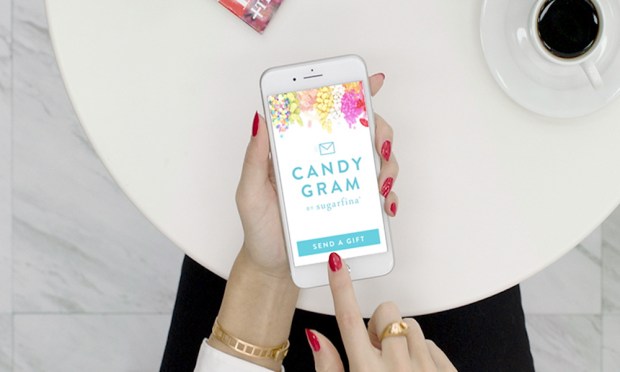The Sweet Side Of Building A Luxury eCommerce Brand

While most startups are a labor of love, love is rarely the starting point for a business venture. Couples go into business together all the time, of course; it’s just not usually something they decide to do on their first date.
But when Sugarfina Founders Rosie O’Neill and her now-husband Josh Resnick first stepped out on the town together to see a movie, they chose “Willy Wonka and the Chocolate Factory.”
Their date ended up being better than romantic — it was inspirational: The couple emerged from the theater wondering why candy couldn’t be as fun and immersive as it was in the movie. Both O’Neill and Resnick admitted to having a sweet tooth, but their affinity for candy wasn’t what drove them to found their firm in 2012. It was the realization that candy was mostly marketed to kids, but that adults also wanted sweets and a sweet experience all their own.
The pair decided they couldn’t be the only two people on Earth looking for an “adult candy store.”
“Everyone deserves a little treat, an indulgence,” Resnick said. “Our candy plays a part in that. If you’re going to indulge, why not [indulge in] the best?”
Resnick and O’Neill, with their shared passion for the sweet side of life, were also uniquely well-suited to give this project a whirl: Resnick sold Pandemic Studios, his video game design firm, to Electronic Arts in 2007 in a deal valued at $860 million, giving him the luxury to travel the entire world to find the best and brightest ideas around confectionery.
Interestingly, as the brand evolved, according to O’Neill, the real driver of what their site offered — and their few physical stores — were the flavors making social media waves.
O’Neill noted in an interview with Fortune that she “lives” on social media and is always on the hunt for new flavors that lend themselves to two things: candy that tastes good and candy that looks good. So, when blush wine was in over the summer, Sugarfina debuted gummy bears “infused with real rosé.”
Two hours later, their blush gummy bears were sold out, and the product was written up all over the web. By the end of week, the founders noted, 18,000 people were in line for the newest in boozy bears.
While the success of the rosé-infused gummy bears was impressive and explosive, it was not a one-time experience for the brand. When whiskey was trendy in early 2017, the company released a line of “single-barrel bourbon” gummy bears. When green juice was on the loose — commercially speaking — green juice gummies were produced in collaboration with Los Angeles-based Pressed Juicery. Before everyone was after the rosé bears, the company partnered with Casamigos Tequila (co-founded by George Clooney and sold for $1 billion in July) to create a line of infused candies and chocolate.
“This has taken off pretty fast in terms of word of mouth and early positive press reviews,” Resnick noted of the brand’s lightning-paced last five years. “It’s a been a little nuts and an amazing journey. How can you not have fun running a candy boutique?”
And, it seems, there is almost no way not to have fun with it — save one: People stop loving candy.
Which, unlikely though it may sound, is a threat to candy makers everywhere, artisanal and otherwise.
According to a Reuters/Ipsos poll of 1,883 adults living in the United States taken in early January, 58 percent of American consumers claimed to have at least attempted to limit their sugar intake. That is higher than the percentage of those who were targeting reductions in their intake of calories, sodium, fats, cholesterol or carbohydrates. It also follows recommendations from the government that adults should attempt to cut their percentage of daily calories from sugar to 10 percent — a move that would cut off about one-third of the average American’s sugar intake.
But Sugarfina grows — and expects to continue to do so — because their products, which run for quite a bit more than the average checkout line chocolate, is more than a treat. For many of their customers, the company’s products become gifts — 2.3 percent of the brand’s revenue comes via gift giving. For many, it’s more than a way to enjoy a good-tasting sweet; it’s a way to demonstrate good taste.
“Our whole vision is to be the opposite of any existing candy brand,” O’Neill emphasized.
